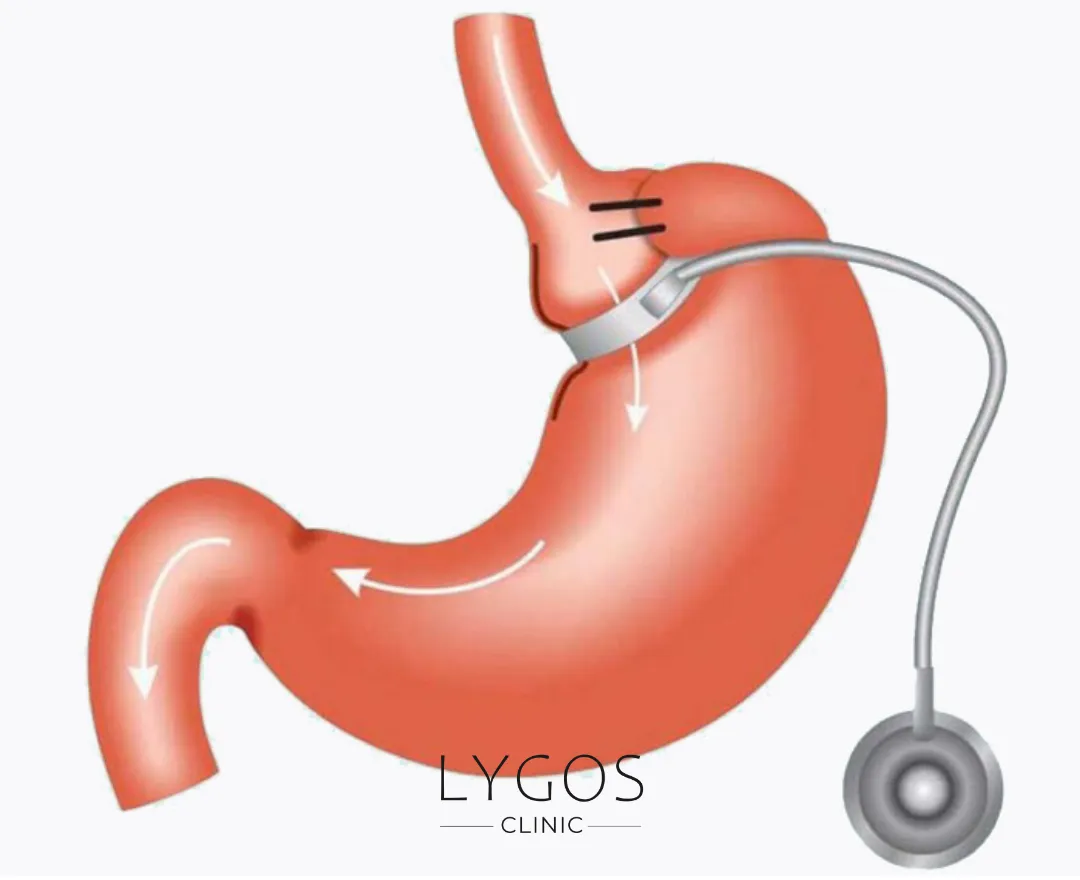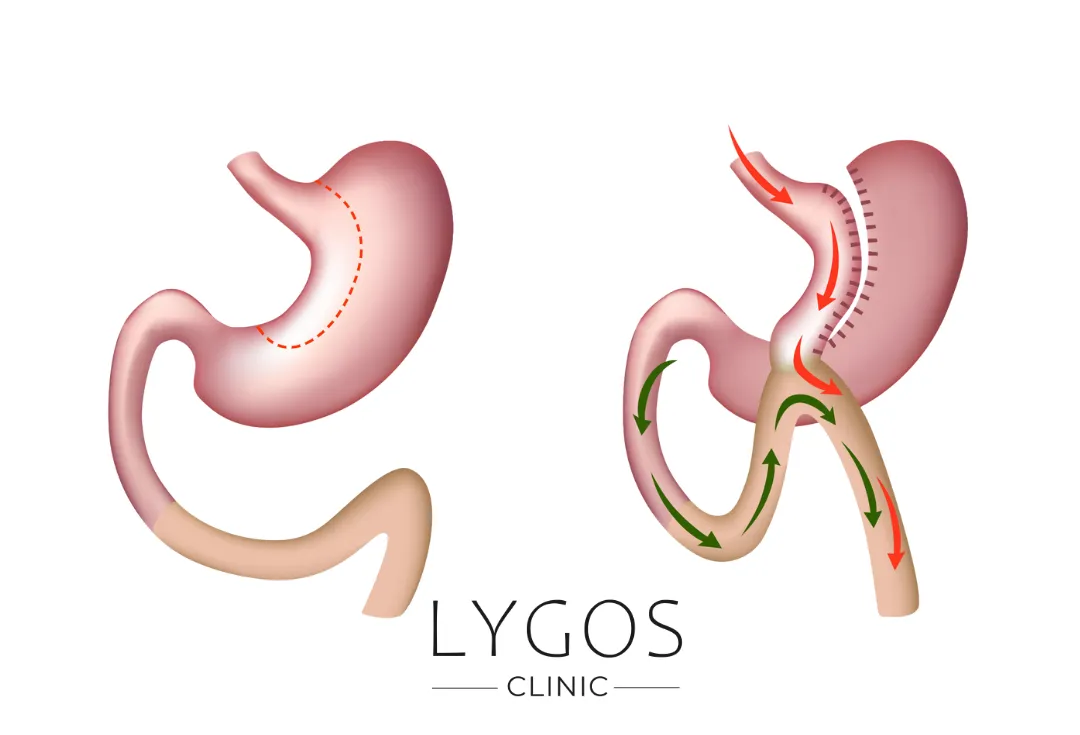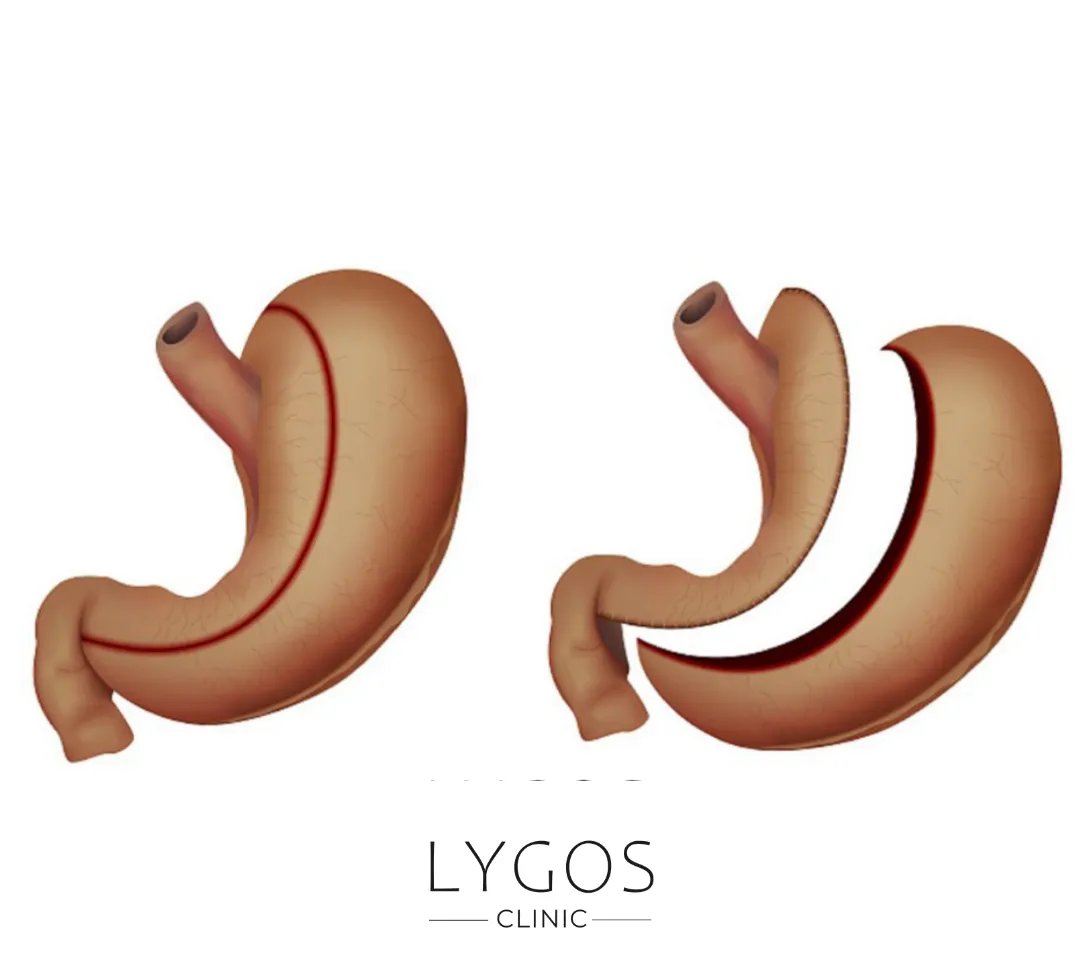Gastric Band Surgery
Get Free Consultation
Chose Your Topic

How is a Gastric Band Inserted?
Gastric band is a surgical intervention that takes about an hour. It is performed under general anesthesia. This anesthesia method is preferred for the comfort of the patient and for the doctor to do his job in the best way. Since this operation is performed as laparoscopic surgery, it is considered more appropriate to be performed under anesthesia.
Before the procedure, the abdominal area is hygienized. After the necessary steps are completed, the esophagus and stomach connection point is reached through a small incision no larger than 1 cm. A gastric band is inserted a few centimeters beyond this area.
The band is a structure with a bubble underneath. After the placement of the band, this bubble is inflated to cover a certain area. Thus, the clamp is prevented from damaging the organs and tissues close to the stomach. At the same time, the narrowing process is provided.
Thanks to the inflated balloon, nutrients accumulate in this area, creating the feeling that the patient's stomach is full. Due to this balloon, nutrient delivery to the stomach is slow, absorption slows down and the patient does not feel the desire to eat. This provides the patient with a great support for rapid weight loss.
Since gastric band is performed with a closed surgery technique, the patient can return to his/her normal life in a shorter time. Since the internal organs are not damaged, the postoperative healing process is quite comfortable. Since the incisions are very small, postoperative pain is minimal and there are no obvious surgical scars. This helps patients to recover quickly both physically and psychologically.
When is the Gastric Band Removed?
After gastric band, the patient can lose 60 percent of the excess weight within 24 months. Also, when is the gastric band removed? The question is wondered by many people. Since the gastric band does not change the anatomy of the digestive system, it can be removed at any time.
However, it is very important that the necessary controls are carried out by specialists before the gastric band is removed. In this way, possible risks can be prevented and the patient can continue his/her life in a healthier way.

How is Gastric Band Surgery Performed?
Gastric band surgery is a surgical procedure performed by placing a silicone band 3-4 cm below the area where the esophagus and stomach meet. This band makes the upper part of the stomach a smaller section, so the patient experiences a feeling of satiety by consuming less food. So, how is gastric band surgery performed?
The patient is placed supine on the operating table with the feet bent 30 degrees downwards. The operator works between the patient's legs, which are in the reverse Trendelenburg position.
First, the abdomen is hygienically prepared. A small incision is made above the umbilicus and the abdominal cavity is entered using a Verres needle or an optical trocar, depending on the surgeon's experience. The optical trocar provides a safer access as the layers can be seen one by one. The first incision is made approximately six fingers below the breastbone and in the midline. The optical camera enters through this incision. The intra-abdominal pressure is inflated to 15 mmHg with carbon dioxide gas, which prevents injury to organs.
A total of five trocars (cannula through which the instruments will pass) are inserted through the incisions.
The anesthesiologist inserts a nasogastric tube with an inflatable balloon at the end into the stomach and the balloon is inflated with 2.5 cc of serum. This balloon helps the surgeon to identify the area to dissect. Dissection of the lesser curvature is performed close to the stomach wall and the laterjet nerve is protected. The gastric fundus is grasped with a grasper and pulled downward and the phrenogastric ligament is stretched and dissected. The dissector advanced through the retrogastric tunnel opens the area where the band will be placed. The silicone band is placed into the abdomen through the outermost 10 mm trocar and passed behind the stomach. The band is placed around the stomach and tightened.
The anesthesiologist checks the correct placement of the band by inflating the oral gastric calibration tube. If the band is in the correct position, the band is locked and adjusted. The balloon part of the band is calibrated by filling it with an external syringe and the required pressure is provided.
To prevent the band from slipping, the band is secured with four or five sutures passing through the serosa of the stomach. The connecting tube is removed from the outermost port and reassembled after cutting it to the appropriate length. The port is attached to the fascia with four or five sutures depending on the band. Thanks to this port, the fullness of the band and the opening at the exit of the gastric pouch can be easily adjusted from the outside.
After surgery, the first filling procedure is performed after 1.5-2 months in relation to the follow-up of the patient's weight loss. Gastric band is an effective method to achieve long-term weight loss. This method allows the patient to return to normal life in a shorter time. Gastric band surgery is an ideal solution, especially for patients who have a high body mass index and have failed with other weight loss methods. Since the surgery does not change the anatomy of the digestive system, it can be easily removed when desired. This is a great advantage for patients.

Who is Suitable for Gastric Band Surgery?
Gastric band surgery is suitable for people between the ages of 18-65. In addition, it can be applied to all obese patients with a body mass index (BMI) of at least 40 and without a serious metabolic disorder determined before the operation. This operation is the most suitable option for individuals with approximately 40-50 kilograms more than their ideal weight.
Patients under 18 years of age can also have gastric banding. However, in this case, both parental permission is required and the patient must meet all the criteria. It is important that these young patients are directed to sports and diet programs and strictly monitored before surgery.
Patients with a BMI between 35-40 may also be candidates for gastric band surgery. However, these patients must have additional health problems that develop due to obesity and negatively affect their body systems. Metabolic diseases such as diabetes and hypertension are examples of these problems. The presence of these conditions can be counted among the eligibility criteria for gastric band surgery.
In addition, for obesity patients with chronic diseases such as renal failure, consultation and approval of specialized and experienced doctors should be obtained. Gastric band surgery is an effective method in the treatment of obesity and can give successful results in suitable patients. However, as with any surgical intervention, this surgery also has risks and requirements. It is critical for long-term success and safety that patients undergo a comprehensive evaluation before surgery.
What are the Risks of Gastric Band Surgery?
Gastric band is a surgical operation performed under general anesthesia. Therefore, as with any surgical operation, there are minimal risks that may arise from anesthesia. However, the rate of these risks is not different from other surgical procedures. Although the risks of gastric band surgery include breathing difficulties, bleeding or embolism, the incidence of such complications is very low.
Although gastric band surgery may seem like a minor procedure, it interferes with the normal functioning of your stomach. This can lead to minimal complications such as vomiting, constipation or hair loss after the operation, which can be treated. So, what are the risks of gastric band surgery?

- Slippage of the gastric clamp from the insertion site.
- Development of a stomach ulcer.
- Development of infection.
- Irritation of the stomach wall by the clamp.
- The body reacts negatively to the silicone material used in the clamp.
- Damage to other organs and tissues around the stomach during the operation.
- Tightening the clamp more or less than it should be.

Nutrition After Gastric Band Surgery
Patients need to make radical changes in nutrition after gastric band surgery. In this process, a healthy nutrition program should be created and the patient should be supported to lose weight without straining the stomach. Light foods that will keep gastric band patients full for longer and help them eat less should be preferred.
A nutrition program containing solid, soft and dense foods that will prolong the feeling of satiety should be prepared. The patient should be warned not to consume beverages with meals. All beverages including water should be drunk at least 1 or 2 hours after meals. However, it is important to drink at least 2 liters of water a day to keep the body hydrated. In nutrition after gastric band surgery, the patient should limit his/her meals to three.
Snacks and snacks should be completely eliminated. Meals and foods should be consumed slowly and chewed very well. To facilitate good chewing, bites can be divided into small pieces. Healthy foods with high nutritional value should be preferred. Foods rich in protein and containing plenty of vitamins and minerals should be prioritized. Avoid processed and packaged foods. Snacks should no longer be included in the diet.
Transitioning to this new diet will both facilitate the postoperative recovery process of patients with gastric band and help them achieve healthy weight loss in the long term. Changing eating habits is critical for the success of the surgery and the overall health of the patient. Therefore, patients should receive the necessary support in this regard and pay attention to the recommendations of their doctors.
Before and After Gastric Band Surgery
The change that occurs before and after gastric band surgery manifests itself in many respects. This procedure, which is one of the most ideal methods for the patient, generally does not cause any health problems if the doctor controls are regularly attended. It also protects the basic functions of the body. This allows the patient to continue his/her life smoothly before and after gastric band surgery.
People who complain of joint pain and cannot go out due to health problems get rid of the problems they experience thanks to this method. The patient, who turns into different people before and after gastric band surgery, gains a fitter and healthier structure. In this way, he also regains his self-confidence.


Gastric Band Surgery Costs
Gastric band surgery costs vary according to the needs of the patient. If the patient’s problem is treated with different methods, the costs are determined accordingly. At the same time, health problems experienced by the person can also affect the costs. Gastric band surgery costs may also increase according to the size of the patient’s problem. The cost of surgery performed by a specialist is higher.
Therefore, it should be carefully decided which doctor will perform the procedure. Gastric band surgery costs also vary depending on the quality of the hospital. Costs are usually higher in a hospital with high quality and state-of-the-art equipment. However, it should not be forgotten that the success rate will also be reflected in the costs. Therefore, gastric band surgery costs can increase with the right choice of hospital and doctor. If you want to get more detailed information about the subject, you can contact Lygos Clinic’s expert team.
Frequently Asked Questions About Gastric Band Surgery
BLOG

Benefits of Black Seed Oil | How to Use Black Seed Oil;?
Chose Your Topic Benefits of Black Seed Oil The benefits of black seed oil have been known for centuries as

What is Good for Menstrual Pain? | How to Treat Menstrual Pain?
Chose Your Topic What is Good for Menstrual Pain? Menstrual pain is a common issue that many women face every

What is Psoriasis? | Symptoms and Treatment of Psoriasis
Chose Your Topic What is Psoriasis? Symptoms and Treatment of Psoriasis Psoriasis, which manifests through symptoms like skin flaking, redness,





